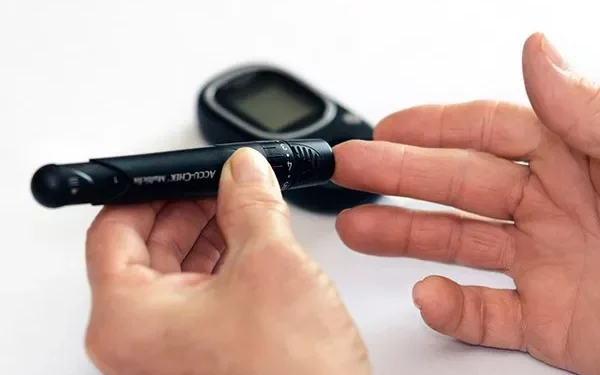Fasting glucose levels are a critical component in the management and diagnosis of diabetes. By measuring blood glucose levels after a period of fasting, healthcare providers can assess how well the body regulates blood sugar and identify potential issues with glucose metabolism. This article provides an in-depth examination of what constitutes a normal fasting glucose range, the factors influencing these levels, and the implications of abnormal results.
What is Fasting Glucose?
Fasting glucose refers to the concentration of glucose in the blood after an individual has not consumed any food or drink (except water) for a specific period, typically 8 to 12 hours. This measurement is crucial for assessing metabolic function and diagnosing conditions such as diabetes and prediabetes.
1. The Physiology of Glucose Regulation
Glucose is a primary source of energy for the body. After eating, glucose levels in the bloodstream rise, prompting the pancreas to release insulin. Insulin facilitates the uptake of glucose into cells, where it can be used for energy or stored for later use. During fasting periods, glucose levels should be regulated through processes such as glycogenolysis and gluconeogenesis, ensuring that blood sugar levels remain stable.
2. Importance of Fasting Glucose Measurement
Measuring fasting glucose provides a clear picture of how well the body maintains glucose homeostasis when it is not influenced by recent food intake. This measurement is often used to:
Diagnose Diabetes: Elevated fasting glucose levels can indicate the presence of diabetes.
Monitor Disease Progression: Regular monitoring helps track the effectiveness of diabetes management strategies.
Assess Risk: Identifying abnormal fasting glucose levels can help assess an individual’s risk of developing diabetes.
Normal Fasting Glucose Range
The normal range for fasting glucose levels can vary slightly depending on the source and the specific guidelines used. However, general benchmarks are widely accepted in clinical practice.
1. Normal Range
For most individuals, a normal fasting glucose level is: Less than 100 mg/dL (5.6 mmol/L)
This range indicates that the body is effectively managing blood glucose levels during fasting periods.
2. Elevated Fasting Glucose
Fasting glucose levels that fall outside the normal range may suggest different stages of glucose dysregulation:
100 to 125 mg/dL (5.6 to 6.9 mmol/L): This range is indicative of prediabetes, a condition where blood glucose levels are higher than normal but not high enough to be classified as diabetes.
126 mg/dL (7.0 mmol/L) or higher: Consistently elevated fasting glucose levels in this range are used to diagnose diabetes.
Factors Influencing Fasting Glucose Levels
Several factors can impact fasting glucose measurements, including:
1. Diet
What you eat before a fasting period can affect glucose levels. For accurate measurement, ensure a standard fasting period, typically 8 to 12 hours, with no food or caloric beverages consumed.
2. Physical Activity
Regular exercise helps regulate blood glucose levels. Conversely, physical inactivity can lead to higher fasting glucose levels.
3. Stress and Illness
Stress and illness can impact glucose metabolism and potentially elevate fasting glucose levels.
4. Medications
Certain medications, including steroids and some antihypertensives, can influence blood glucose levels.
5. Sleep Patterns
Poor sleep quality and sleep disorders can affect glucose regulation and result in abnormal fasting glucose levels.
Testing and Interpreting Fasting Glucose Levels
1. How the Test is Performed
A fasting glucose test is typically performed in a healthcare setting. It involves:
Preparation: Fasting for at least 8 hours.
Sample Collection: A blood sample is taken, usually from a vein in the arm.
Laboratory Analysis: The sample is analyzed to determine glucose concentration.
2. Interpreting Results
Results are interpreted based on established clinical guidelines. Abnormal results are often followed up with additional tests, such as:
Oral Glucose Tolerance Test (OGTT): Measures glucose levels before and after consuming a glucose-rich beverage.
Hemoglobin A1c Test: Provides an average of blood glucose levels over the past 2-3 months.
Random Glucose Test: Measures glucose levels at any time of the day without fasting.
Managing Abnormal Fasting Glucose Levels
If fasting glucose levels are outside the normal range, appropriate management strategies depend on the diagnosis.
1. Prediabetes
Individuals with prediabetes should focus on lifestyle modifications to prevent progression to diabetes:
Diet: Emphasize a balanced diet rich in whole grains, lean proteins, fruits, and vegetables.
Exercise: Engage in regular physical activity, aiming for at least 150 minutes of moderate-intensity exercise per week.
Weight Management: Achieving and maintaining a healthy weight can improve insulin sensitivity.
2. Diabetes
For those diagnosed with diabetes, comprehensive management strategies are necessary:
Medication: Medications such as metformin, insulin, or other antidiabetic drugs may be prescribed.
Diet and Exercise: Continue to follow a balanced diet and regular exercise regimen.
Monitoring: Regularly monitor blood glucose levels to ensure they remain within target ranges.
Education: Participate in diabetes education programs to learn effective self-management techniques.
Preventive Measures and Lifestyle Modifications
Preventive measures and lifestyle changes play a crucial role in maintaining normal fasting glucose levels and reducing the risk of diabetes:
1. Healthy Eating
Adopt a diet that includes:
Fiber-Rich Foods: Whole grains, vegetables, fruits, and legumes.
Healthy Fats: Sources like avocados, nuts, and olive oil.
Lean Proteins: Chicken, fish, tofu, and legumes.
2. Regular Exercise
Engage in activities such as:
Aerobic Exercise: Walking, jogging, cycling, or swimming.
Strength Training: Weight lifting or bodyweight exercises.
3. Stress Management
Practice techniques to manage stress, such as:
Mindfulness and Meditation: Techniques to promote relaxation and reduce stress.
Healthy Sleep Habits: Aim for 7-9 hours of quality sleep per night.
4. Regular Check-Ups
Routine check-ups with healthcare providers help monitor fasting glucose levels and address any concerns promptly.
See also: What Level Should Glucose Be in a Blood Test?
Conclusion
Understanding and managing fasting glucose levels is a crucial aspect of diabetes care and prevention. Normal fasting glucose levels are typically less than 100 mg/dL (5.6 mmol/L), but variations can occur based on individual factors and health conditions. Regular monitoring, lifestyle modifications, and medical management play significant roles in maintaining optimal glucose levels and reducing the risk of diabetes and related complications.
For personalized guidance and to address specific concerns, individuals should consult with their healthcare providers or a registered dietitian specializing in diabetes care. Regular follow-ups and adherence to recommended management strategies can help achieve and maintain healthy fasting glucose levels, contributing to overall well-being and health.
Related topics:
Is Blood Glucose Meter Accurate?

























